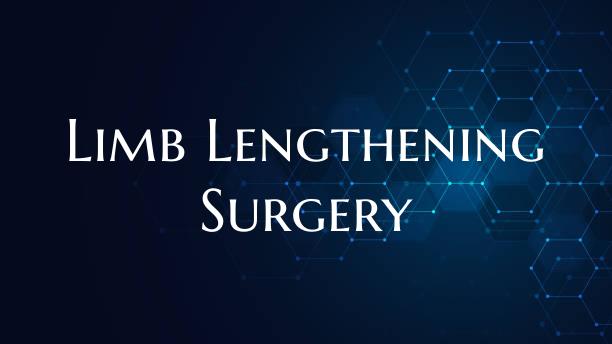
Limb Lengthening Surgery
Limb lengthening surgery, also known as distraction osteogenesis, is a complex orthopedic procedure aimed at increasing the length of a person's limbs. This surgical technique has been utilized to address a variety of conditions, including limb length discrepancies, dwarfism, and certain types of deformities.
### Understanding Limb Lengthening Surgery
#### How the Procedure Works: Limb lengthening surgery involves surgically breaking a bone and then gradually pulling the two bone segments apart through a device called an external or internal fixator. This process stimulates new bone growth in the gap created, leading to the desired increase in limb length.
#### Indications for Surgery: - Limb Length Discrepancy: When one limb is shorter than the other, either due to a congenital condition or previous injury. - Dwarfism: Limb lengthening surgery can increase the height of individuals with certain types of dwarfism. - Deformities: Correcting deformities such as bowed legs or knock knees through lengthening and straightening the affected limb.
### The Limb Lengthening Process
1. Pre-surgery Preparation: Before the surgery, the patient will undergo a thorough evaluation by the orthopedic surgeon to determine the best course of action. 2. Surgery: The initial surgical procedure involves breaking the bone and placing the fixator device for lengthening. 3. Lengthening Phase: Over the following weeks or months, the patient or their healthcare provider will gradually adjust the fixator to pull the bone segments apart, typically at a rate of around 1 millimeter per day. 4. Consolidation Phase: After reaching the desired length, the bone will be allowed to heal and consolidate to improve its strength. 5. Recovery and Rehabilitation: Physical therapy is crucial during the recovery process to help restore strength, flexibility, and function to the limb.
### Potential Risks and Complications
While limb lengthening surgery can be highly effective, it is not without risks. Potential complications may include: - Infection at the surgical site. - Nerve or blood vessel damage. - Slow bone healing or non-union. - Joint stiffness or muscle weakness.
### Benefits and Outcomes
Limb lengthening surgery offers numerous benefits, including improved mobility, function, and quality of life for individuals with limb length discrepancies or deformities. With advancements in surgical techniques and technology, the procedure has become safer and more effective, leading to better outcomes for patients.
### Conclusion
Limb lengthening surgery is a significant orthopedic procedure that has the potential to transform the lives of individuals with limb length inequalities or deformities. While the process may be challenging and require dedication from both the patient and healthcare team, the results can be truly life-changing. If you are considering limb lengthening surgery, it is crucial to consult with a qualified orthopedic surgeon to discuss your options and determine the best course of treatment for your specific condition.